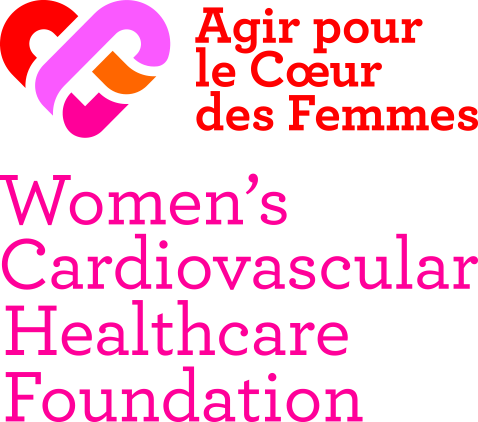
ANTICIPER
Risk Factors
Why Women are More Exposed to Cardiovascular Risk Factors
Lifestyles have changed a lot in the last 30 years, so women are exposed to more cardiovascular risk factors than ever.


Tobacco is especially toxic for women’s arteries. Three to four cigarettes per day triples the risk of cardiovascular disease in women. For a woman who smokes, the risk of dying from a cardiovascular disease is equivalent to a non-smoking woman who weighs 42 kg (93 lbs.) more. On average, she has her first heart attack 13.7 years earlier than a non-smoking woman while a man who smokes has his first heart attack 6.2 years earlier than a non-smoking man (Source: Eur J Cardiovasc Prev Rehabil. 2009).
High Blood Pressure
After menopause, women are more likely to have high blood pressure than men of the same age. This condition has a greater impact on women than men and is linked to higher numbers of heart attacks, strokes and heart failure. Yet it appears that the proportion of women treated for high blood pressure has been declining since 2006 (BEH 2018) due to insufficient screening.
Diabetes
Cardiovascular mortality is higher in diabetic women than diabetic men, with a much higher relative risk for a fatal coronary disease (J Am Coll Cardiol. 2006). Cholesterol
Cholesterol contributes more significantly to a risk of cardiovascular disease in women than men (J Am Coll Cardiol. 2006).
Excess Weight and Obesity
Excess weight and obesity have been on the rise for women, especially those aged 40 to 54 while they are declining among men. (Esteban Santé Publique France 2017).
Sedentary Lifestyle
Only 53% of women get the WHO’s recommended amount of physical activity compared to 70% of men. (Esteban Santé Publique France 2017). The number of women who are physically active according to WHO guidelines has decreased 10% in 10 years, especially for the 40 to 54 age group (22% decrease) At the same time, the proportion of physically active men has increased by 7%. Lack of physical activity is a more frequent risk factor for women and is on par with risks of tobacco use, high blood pressure and excess weight.
Psychosocial Factors
Women are two times more likely than men to experience depression and are more often at a socioeconomic disadvantage. These risk factors are more often linked to coronary disease in women than in men, making these factors as significant as high blood pressure and diabetes (Etude Interheart 2004).
Hormones
This risk is a factor that women have to deal with in addition to the other factors men also share. It is linked to three key stages of their lives: use of contraception with synthetic estrogen (pill, patch or vaginal ring), pregnancy and menopause (J Am Coll Cardiol 2006). The risk of vascular events when taking contraception containing synthetic estrogen mainly depends on tobacco use, age (> 35 years), migraines with aura (such as ocular migraines) and the existence of other risk factors like high blood pressure, diabetes or excess weight. Pre-eclampsia, gestational hypertension and gestational diabetes are specific risk factors for cardiovascular events a bit later in a woman’s life, especially if no suitable prevention steps are taken (Eur Heart J 2016). Hormonal disturbances during menopause lead to metabolic syndromes (abdominal obesity, high lipids in blood and diabetes) and vascular syndromes (stiffer arteries, high blood pressure, clogged arteries due to cholesterol). Without appropriate lifestyle changes and targeted screening for key risk factors, the risk gap between women and men for cardiovascular events quickly closes in.
SEE ALSO
Why Your Heart Isn’t Sweet on Sugar
Nutrition
What are we talking about exactly? We’re talking about sugars that makes things sweet, found in sugary foods and beverages that are high in sucrose and fructose. We’re also talking about starch found in bread (and cereals). Even potatoes aren’t totally innocent: they contain [...]
Why High Blood Pressure is a Silent Killer
High Blood Pressure
Constant high blood pressure tires the heart and seriously damages the artery walls, which can trigger cardiovascular events. High blood pressure greatly increases the risk of stroke, heart attack and peripheral artery disease, as well as vascular dementia and chronic kidney disease. Women with [...]
Aortic Dissection in Pregnancy: A Rare But Often Fatal Complication
Gynecology
Aortic dissection is an acute tearing of the aorta, the vessel that leaves the heart and carries blood to all the organs. This is a rare event (1 in 100,000 pregnancies) but it is very serious and requires urgent treatment. Pregnancy contributes to this condition due to hormone impregnation that [...]




